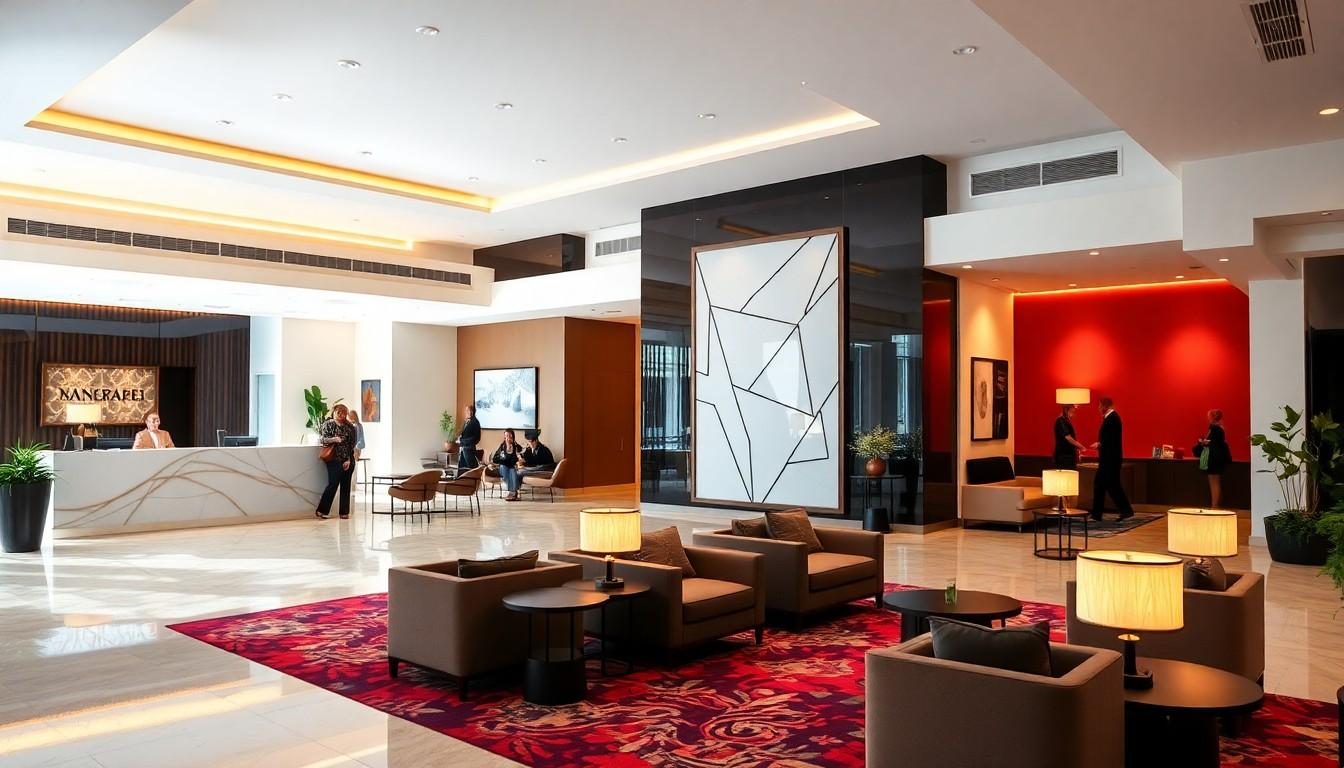
Hotel Branding Secrets: Create Lasting Impressions for Guest Loyalty
In a world where every hotel claims to offer a unique experience, standing out can feel like trying to find a needle in a haystack—or worse, a sock in a hotel laundry. Hotel branding isn’t just a fancy logo or a catchy slogan; it’s the secret sauce that transforms a simple stay into an unforgettable adventure. Whether it’s the warm cookie waiting at check-in or the quirky decor that makes guests chuckle, effective branding creates a lasting impression.
Imagine walking into a hotel that feels like a second home, where every detail whispers, “You belong here.” That’s the power of hotel branding. It’s about crafting a narrative that resonates with guests, making them feel special and valued. Dive into the world of hotel branding, where creativity meets strategy, and discover how to turn those fleeting visits into lifelong loyalty.
Hotel Branding
Hotel branding encompasses the strategies and elements that distinguish a hotel from its competitors. This process includes more than visual identities; it creates a memorable narrative that resonates with guests, helping them develop a connection with the property.
Definition of Hotel Branding
Hotel branding refers to the overall perception and representation of a hotel in the marketplace. It combines visual elements, such as logos and design themes, with intangible aspects like service quality and guest experience. Effective branding communicates a hotel’s unique value and personality, allowing guests to form emotional connections. This alignment of identity and experience enhances recognition and loyalty.

Importance of Hotel Branding
Strong hotel branding plays a vital role in attracting and retaining guests. Guests often choose hotels based on their perceived reputation, which stems from consistent branding efforts. An effective brand inspires trust and influences decision-making. Hotels with recognizable brands can command premium rates and foster customer loyalty, translating into repeat business. Additionally, memorable experiences encourage positive reviews and referrals, leading to increased visibility and market competitiveness.
Key Elements of Hotel Branding
Effective hotel branding hinges on several key elements that shape guest perceptions and experiences.
Logo and Visual Identity
A compelling logo creates instant recognition and evokes emotions. Visual identity represents not only the logo but also the color palette, typography, and design elements. Cohesiveness across all visual materials strengthens brand recall. For instance, using consistent colors in online bookings, signage, and marketing materials establishes a uniform presence. Clear visual identity aids in distinguishing a hotel from competitors. Well-designed graphics convey the values and personality of the brand, enhancing the guest’s initial impression.
Brand Voice and Messaging
Brand voice influences how hotels communicate with guests across various platforms. Establishing a unique tone fosters connection and relatability. Messaging should align with the overall brand narrative, ensuring consistency in advertising, social media, and direct interactions. For example, a luxury hotel may adopt an elegant and sophisticated tone, while a boutique hotel may use a more casual and friendly approach. Consistent messaging builds trust and reinforces the brand’s values, attracting guests who resonate with the hotel’s identity. Clear and impactful communication can drive engagement and loyalty among repeat customers.
Strategies for Effective Hotel Branding
Effective hotel branding requires a well-rounded approach that resonates with potential guests. Identifying the right strategies maximizes impact and cultivates strong connections.

Target Audience Identification
Understanding the target audience is essential for effective branding. Demographics like age, income, and travel preferences shape brand messaging. Hotels that identify specific customer segments tailor experiences that align with guests’ expectations. Market research reveals trends and insights into guest behavior, informing key decisions. Personalizing services based on guest profiles enhances satisfaction and fosters loyalty. Engaging with guests through surveys and feedback further identifies their unique needs, guiding promotional strategies.
Consistency Across Channels
Maintaining consistency across all branding channels strengthens recognition. Hotels should ensure messaging aligns on websites, social media, and printed materials. Visual elements such as logos and color schemes require uniformity to create a cohesive identity. Regular updates to content across platforms ensure relevance and engagement. Consistent brand voice in communication fosters trust and familiarity among guests. By aligning promotional strategies with overall brand messaging, hotels create a seamless experience that captivates potential customers and reinforces loyalty.
Case Studies in Hotel Branding
Case studies highlight practical applications of effective hotel branding strategies, showcasing their impact on guest experiences and market positioning. Successful examples provide insights into industry practices.
Successful Hotel Brands
Marriott International exemplifies a successful hotel brand through its consistent global identity combined with localized experiences. The Ritz-Carlton differentiates itself with unparalleled luxury experiences, ensuring personalized service that resonates with high-end travelers. Hilton prides itself on its innovative Guestroom Roomkey app, enhancing customer convenience and driving engagement. Another notable brand, Hyatt, integrates sustainability into its branding, appealing to environmentally conscious guests. Each brand showcases a clear understanding of their target audience, ultimately enhancing loyalty through tailored experiences.
Lessons Learned from Rebranding Efforts
Rebranding offers valuable lessons for hotels. A classic example is the rebranding of AccorHotels to Accor, which emphasized diversification and modernity while retaining a connection to its heritage. Key takeaways include the necessity of understanding guest expectations during transitions. Thorough market research plays a vital role in identifying potential roadblocks and opportunities. Consistency across all communication channels reinforces branding during rebranding efforts, maintaining trust among existing customers while attracting new ones. Ultimately, effective management of the rebranding process can strengthen brand equity and customer connections.
